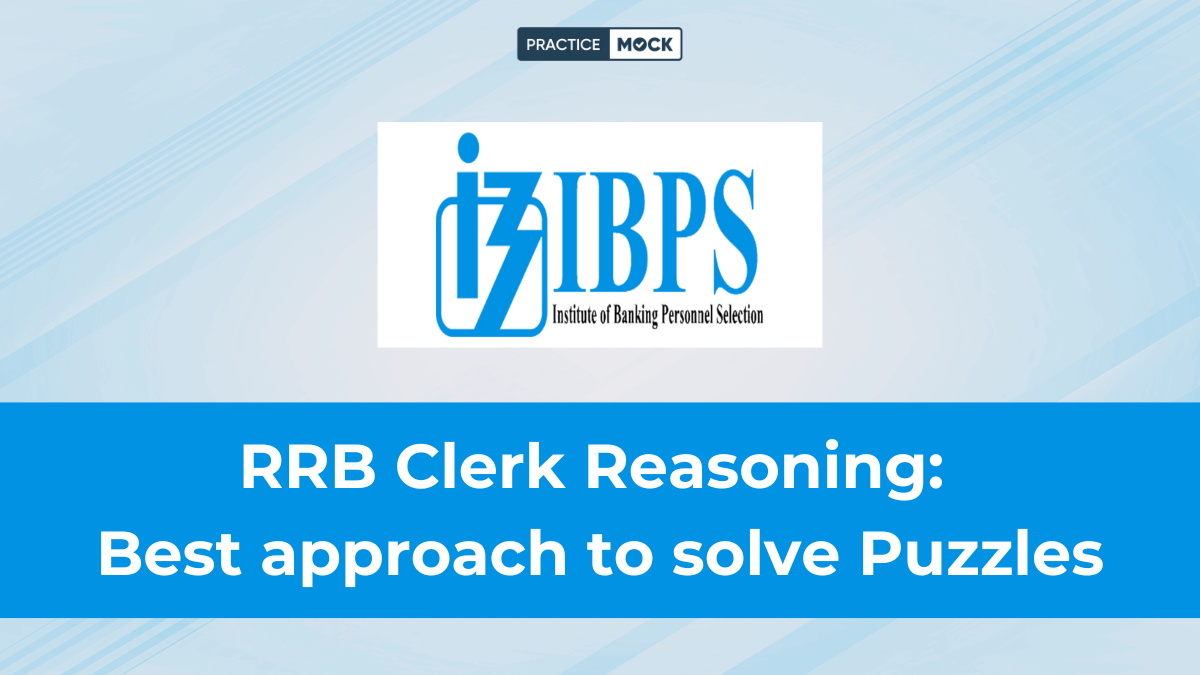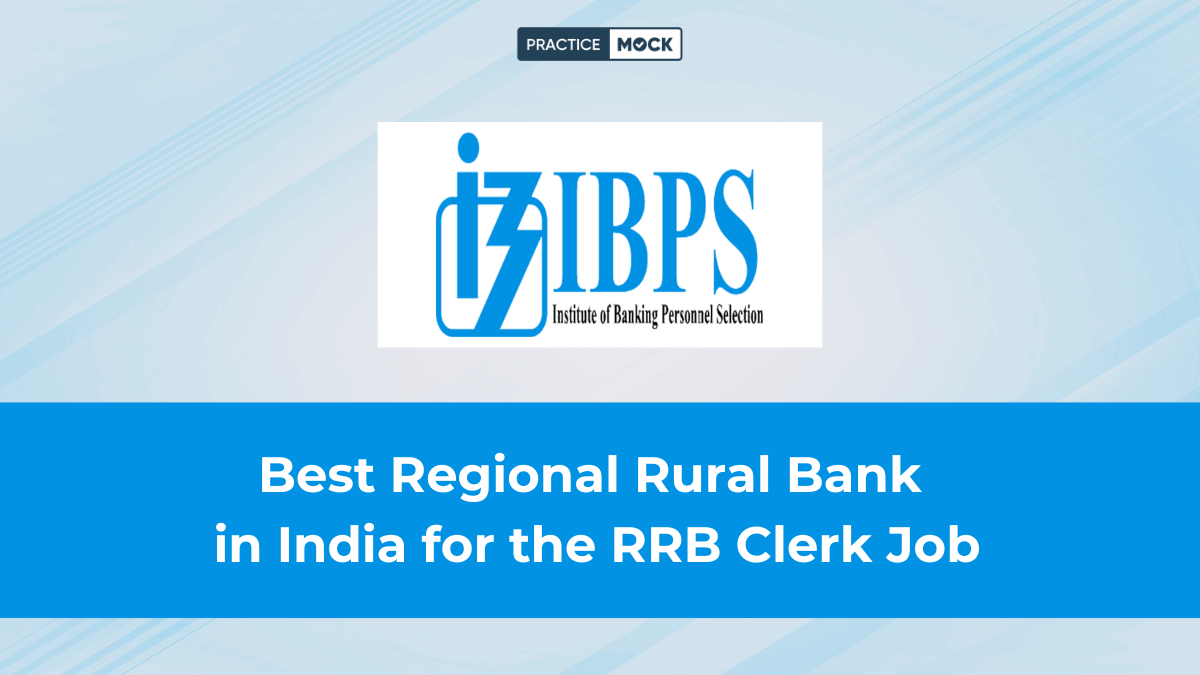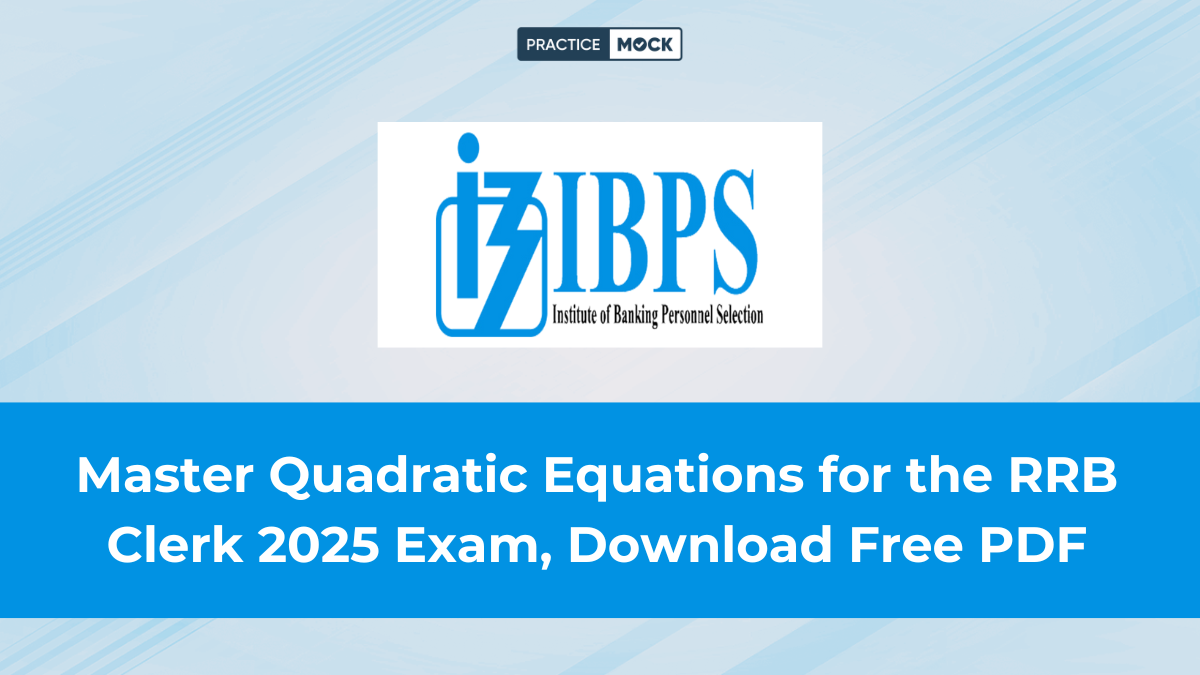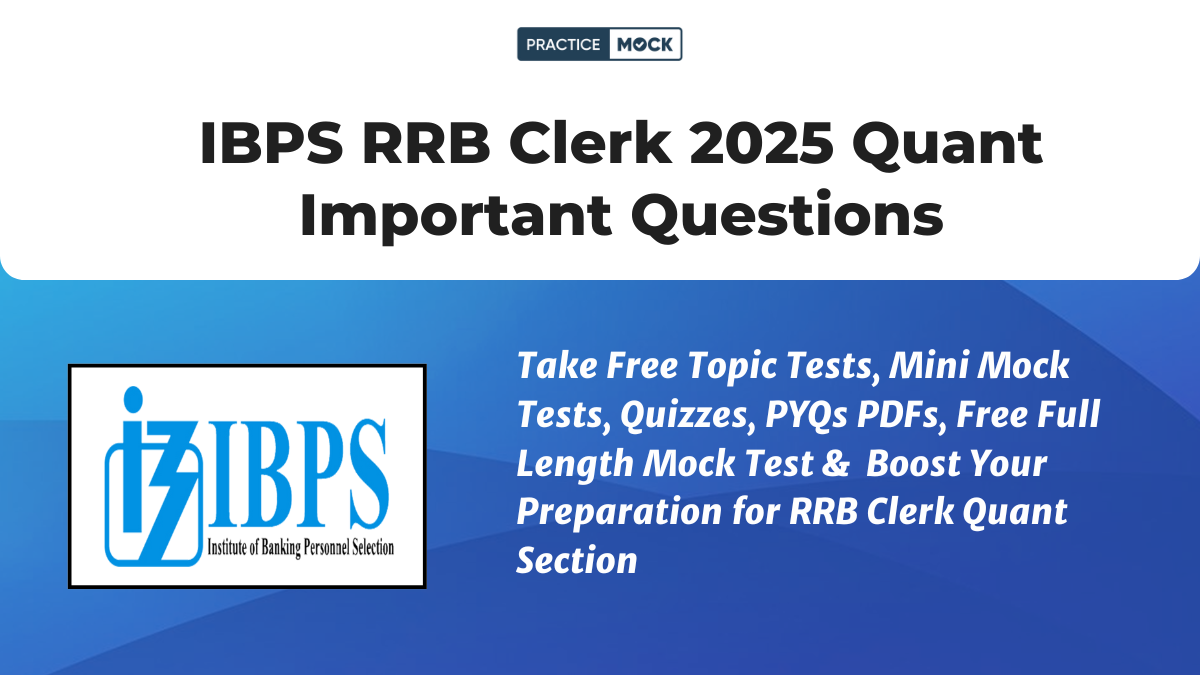RRB Clerk Reasoning: Best approach to solve Puzzles


If you are an IBPS RRB Clerk aspirant, you must already be aware how crucial the Reasoning Section is. And within that, many consider the puzzle questions as the trickiest, yet the most rewarding part. Though they look intimidating at first, once you understand the tricks, they can help you boost up your scores. In this article, we are discussing the IBPS RRB Clerk Reasoning section and providing you the best approach to solve puzzles.
RRB Clerk Reasoning: Best Approach to Solve Puzzles
There are usually 4-5 puzzles in the RRB Clerk Exam, each carrying 5 questions, that makes a contribution of around 50% in the reasoning section, which is obviously huge. Hence, puzzles are often seen as a make-or-break element of the RRB Clerk Exam. These puzzles test your logical thinking, arrangement skills, and pattern recognition.
The Reasoning Ability section in the RRB Clerk exam is a game of smart thinking. It’s not about mugging up facts. It’s actually about how logically and quickly you can analyze situations and spot patterns. The section usually consists of 40 questions, and if approached strategically, it can be your highest-scoring section.
This section includes:
- Puzzles and Seating Arrangements
- Syllogism
- Inequality
- Coding-Decoding
- Blood Relations
- Direction Sense
- Alphanumeric Series
- Order and Ranking
As said earlier, among all these, Puzzles and Seating Arrangements alone contribute 20–25 marks and sometimes even more. So if you do well in puzzles, you automatically boost your reasoning score by a huge margin.
Understand the Puzzle Structure First
The moment you look at a puzzle, it starts to intimidate you. So it’s better to take a few seconds, read the entire puzzle, and understand it before you even lift your pen. Panicking shouldn’t be on the table. Try to identify the total number of elements involved, the type of arrangement, and the number of clues. The moment you recognize the structure, you’re halfway there.
Break it down in your head:
- Are there 8 people and 8 places?
- Do directions matter?
- Is it floor-based or circular?
Best Approach to Solve Puzzles
Solving puzzles in reasoning isn’t just about intelligence but also about smart strategy and practice. Here’s how you can improve your puzzle-solving game step by step:
Read the entire puzzle calmly
Before jumping to conclusions, read every line. Many students miss important clues just because they rush.
Highlight the keywords
Underline or mentally note terms like “left of,” “right of,” “immediate,” “only,” “exactly,” etc. These are key to correct placements.
Start with definite clues
Always begin with clues that give direct information — like “A sits third to the left of B.” These help you build the base.
Use rough diagrams
Draw neat tables or circles (based on puzzle type) and label them. This visual structure will help prevent confusion.
Combine clues logically
Some clues make sense only when paired with others. So, be patient and try connecting the dots slowly.
Avoid assumptions
Never assume anything that’s not directly mentioned. It leads to wrong placements and wastes time.
Handle multiple cases smartly
If a clue leads to two possibilities, draw both, but don’t overdo case-making unless needed.
Practice with a timer
Speed and accuracy both matter in exams. Regular timed practice builds confidence and helps with pressure handling.
Avoid Common Mistakes While Solving Puzzles
There are a few common mistakes that almost every aspirant makes. Instead of just focusing on what to do, it’s equally important to keep an eye on what not to do to avoid any kind of loss.
| Mistake | Why to Avoid It |
|---|---|
| Skipping Clues | Each clue holds importance; ignoring one can derail your entire solution. |
| Making Assumptions | Conclusions should be based only on given data—not guesses or assumptions. |
| Poor Diagram Setup | A cluttered or messy diagram can confuse you and lead to errors. |
| Not Rechecking | Rechecking ensures that all clues are satisfied and helps catch silly mistakes. |
| Getting Stuck on One Puzzle | It wastes precious time. Move on and return if time allows. |
| Ignoring Easier Sets | Don’t miss out on quick marks from simple topics like directions or blood relations. |
| Panicking During Exams | Staying calm improves logical thinking and helps you solve even tough puzzles. |
Final Thoughts
Puzzles can actually become your favorite part of the Reasoning section if approached correctly. Focus on understanding patterns, stay calm while solving, and avoid guesswork. Remember that even solving 3 puzzles correctly out of 5 can help you clear the sectional cut-off comfortably. Make puzzles your strength, not your fear.
Join our exclusive Telegram group where our experts are ready to answer all your queries, guide you in banking exam preparation, and give personalized tips to boost your success. Get access to real-time solutions, expert advice, and valuable resources to improve your study journey. [Click here to join now!]
Other Related Blogs of IBPS Clerk
| IBPS Clerk Cut Off 2025 | IBPS Clerk Exam Pattern 2025 |
| IBPS Clerk Syllabus 2025 | IBPS Clerk Salary 2025 |
| IBPS Clerk Previous Year Question Paper |
FAQs
Around 20–25 out of 40 questions can be puzzle-based.
Linear and circular arrangements, floor-based puzzles, and box puzzles appear frequently.
It’s possible, but not ideal. Puzzles carry high weightage
Ideally, not more than 4–5 minutes per puzzle during practice and mocks.
Recent Posts
150+ Arithmetic Questions for RRB PO Based On Previous Year Papers
In this article we are providing the 150+ Arithmetic Questions for RRB PO Based On…
Do RBI Grade B Officers Get a Pension? Know Before You Start Preparing
Before preparing for RBI Grade B, understand the pension policy, long-term benefits, and how it…
RRB ALP Eligibility Criteria 2025: Qualification, Age Limit, and Other Details
In this blog, we have provided the RRB ALP Eligibility Criteria 2025 which includes Qualification,…
RBI Grade B Latest Updates, Everything You Should Know
Get the latest RBI Grade B updates, including notification dates, eligibility, syllabus, and exam pattern.…
BOB Office Assistant Syllabus 2025, With Latest Exam Pattern
Bank of Baroda Office Assistant syllabus 2025 covers the latest exam pattern for the aspiring…
RRB Group D Exam Date 2025, Check Railways CBT Exam Expected Dates
The RRB will release the RRB Group D Exam Date 2025. In this blog, we…



